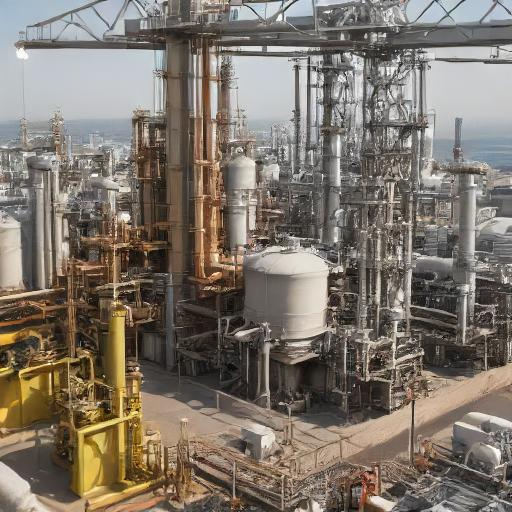Renewable Energy Projects
Renewable energy projects focus on producing power from resources that are naturally replenished on a human timescale, such as sunlight, wind, rain, tides, waves, and geothermal heat. These projects play a critical role in transitioning the global energy supply towards more sustainable sources, reducing dependence on fossil fuels, and mitigating the impact of climate change. Some of the most prominent renewable energy projects include solar power plants, wind farms, hydroelectric power plants, biomass energy facilities, and geothermal power stations.
Solar Power Projects: These involve installing photovoltaic (PV) panels or concentrating solar power (CSP) systems to capture sunlight and convert it into electricity. Solar projects can range from small, rooftop installations to large, utility-scale solar farms. Innovations in PV materials and manufacturing processes have significantly reduced costs, making solar one of the fastest-growing renewable energy technologies worldwide.
Wind Farm Projects: Wind farms consist of multiple wind turbines installed in areas with high wind speeds to convert kinetic energy from the wind into electrical power. Wind projects can be onshore or offshore, with offshore sites often able to harness stronger, more consistent winds but at higher installation and maintenance costs.
Hydroelectric Projects: These generate power by using a dam or barrage to control water flow and drive turbines with hydraulic force. While large-scale hydroelectric projects can have significant environmental and social impacts, smaller-scale installations, such as run-of-the-river systems, offer more sustainable options for generating renewable energy.
Biomass Energy Projects: Biomass projects utilize organic materials, such as plant waste, wood chips, and agricultural residues, as fuel to produce heat or generate electricity. These projects can help manage waste while producing energy but require careful management to ensure sustainability and minimize emissions.
Geothermal Power Projects: These harness heat from beneath the Earth’s crust, converting it into electricity through steam-driven turbines. Geothermal energy offers a stable, reliable source of power with minimal environmental footprint but is location-dependent, being most viable in areas with high geothermal activity. Renewable energy projects often face technical, economic, and regulatory challenges, including resource variability, power storage, grid integration, initial capital costs, and access to suitable locations. However, ongoing technological advancements and supportive policies are helping overcome these barriers. Energy storage technologies, such as batteries and pumped hydro storage, are improving the reliability of renewable sources by mitigating issues related to intermittent generation. Furthermore, declining costs and increasing efficiency of renewable technologies are making these projects more competitive with traditional fossil fuel sources. The global push towards sustainability, coupled with the urgent need to address climate change, is driving rapid growth in renewable energy projects. Through innovation and investment, renewables are set to play a dominant role in the future energy landscape, providing clean, sustainable power and helping to achieve global environmental goals.

Storm Restoration Projects
Storm restoration projects are critical initiatives undertaken to repair and rebuild infrastructure damaged by severe weather events, such as hurricanes, tornadoes, floods, and ice storms. These projects are vital for restoring essential services and ensuring the safety and well-being of affected communities. The complexity and scope of storm restoration efforts can vary widely, depending on the extent of the damage and the types of infrastructure impacted. Here’s an overview of the process and challenges involved in storm restoration projects.
Assessment and Planning Phase: – The first step following a storm is to assess the extent of the damage. This involves emergency response teams, engineers, and utility workers inspecting the affected areas to identify the most critical restoration needs and prioritize efforts. – Detailed planning is essential to allocate resources effectively, including manpower, equipment, and materials. For widespread disasters, this may also involve coordinating with federal, state, and local agencies to ensure a unified response.
Restoration of Essential Services:- Restoring power is usually the top priority, as electricity is necessary for other restoration activities and for returning normalcy to communities. This involves repairing or replacing damaged power lines, poles, transformers, and substations. – Water and sewage treatment facilities are also critical, ensuring residents have access to clean water and sanitary conditions are maintained to prevent health crises.
Infrastructure Repair and Rebuilding: – Transportation infrastructure, including roads, bridges, and public transit systems, often requires significant repairs to enable mobility and support recovery efforts. – Public buildings such as schools, hospitals, and government offices need to be quickly assessed and repaired to resume essential services. – Residential and commercial property repairs are also a significant part of storm restoration. This includes roofing repairs, structural stability assessments, and interior refurbishments.
Challenges and Considerations: – Safety is a paramount concern in storm restoration projects, with risks from downed power lines, unstable structures, and potential gas leaks. – Timeliness is crucial to minimize the disruption to people’s lives and the economy. However, the scale of damage can sometimes lead to prolonged restoration efforts. – Funding and insurance claims are complex issues, as the cost of restoration can be substantial, and navigating insurance claims can be challenging for property owners. – Environmental considerations, such as disposing of debris in an ecologically responsible manner and protecting local wildlife habitats, must be integrated into the restoration process.
Innovations and Improvements: – Technological advancements, such as drones for damage assessment and sophisticated logistics software, are improving the efficiency of restoration efforts. – Pre-emptive measures, including strengthening infrastructure and implementing more rigorous building codes, are increasingly recognized as crucial to mitigating future storm impacts. Storm restoration projects are not only about repairing physical damage but also about supporting communities in recovery, ensuring resilience, and preparing for the inevitabilities of future weather events. Through collaborative efforts, careful planning, and innovative approaches, the impacts of severe weather can be mitigated, providing both immediate relief and long-term preparedness.

Hail Restoration Projects
Hail restoration refers to the process of repairing damage caused by hail storms, which can affect a wide range of structures, including residential homes, commercial buildings, vehicles, and agricultural facilities. Hailstones, which vary in size from small pellets to larger, baseball-sized ice balls, can cause significant damage to roofs, siding, windows, crops, and more. The hail restoration process involves several key steps to ensure properties are returned to their pre-storm condition or better.
Assessment of Damage: – The first step in hail restoration is assessing the extent of the damage. This often involves a professional inspection to identify all areas affected by the hail. Special attention is given to roofs, as they are most susceptible to hail damage. Damage indicators include dented or cracked shingles on roofs, broken windows, dented siding, and damage to air conditioner units.
Filing Insurance Claims: – Once the damage is assessed, the next step typically involves filing an insurance claim. Property owners are encouraged to document the damage with photos or videos and review their insurance policies to understand their coverage. The insurance company usually sends an adjuster to evaluate the damage and determine the claim amount.
Choosing a Restoration Contractor: – Selecting a reputable and experienced restoration contractor is crucial for hail damage repair. It is advisable to choose contractors with a strong track record in hail restoration, as they understand the specifics of dealing with hail damage and working with insurance companies. Beware of “storm chasers,” contractors who appear in areas recently hit by storms, as they may not offer quality services or warranties.
Restoration and Repair Process: – The restoration process begins once the insurance claims are settled. Common repairs include replacing damaged roof shingles, fixing or replacing broken windows, repainting and repairing dented siding, and other structural repairs. Depending on the severity of the damage, the process can vary from quick repairs to extensive renovations.
Preventive Measures: – In addition to repairing damage, hail restoration can also involve implementing preventive measures to reduce future hail damage risk. This might include installing impact-resistant roofing materials, protective window coverings, and hail guards for air conditioning units.
Agricultural Restoration: – For agricultural properties, hail restoration may involve assessing and dealing with crop damage, repairing damaged infrastructure like greenhouses and barns, and implementing strategies for soil and crop recovery.
Challenges in Hail Restoration: – The hail restoration process can be time-consuming and complex, requiring coordination between property owners, contractors, and insurance companies. Delays can occur due to high demand for services after a severe hail storm, and disputes may arise over insurance claim amounts. Ensuring quality repair work that lasts and adequately addresses all damages is also a crucial consideration.
Conclusion: Hail restoration plays a vital role in helping individuals, businesses, and communities recover from the impacts of hailstorms. Effective restoration not only repairs damages but also strengthens structures against future events, contributing to the overall resilience of the affected areas. Proper assessment, selecting the right contractor, and taking preventive measures are key aspects of a successful hail restoration process.
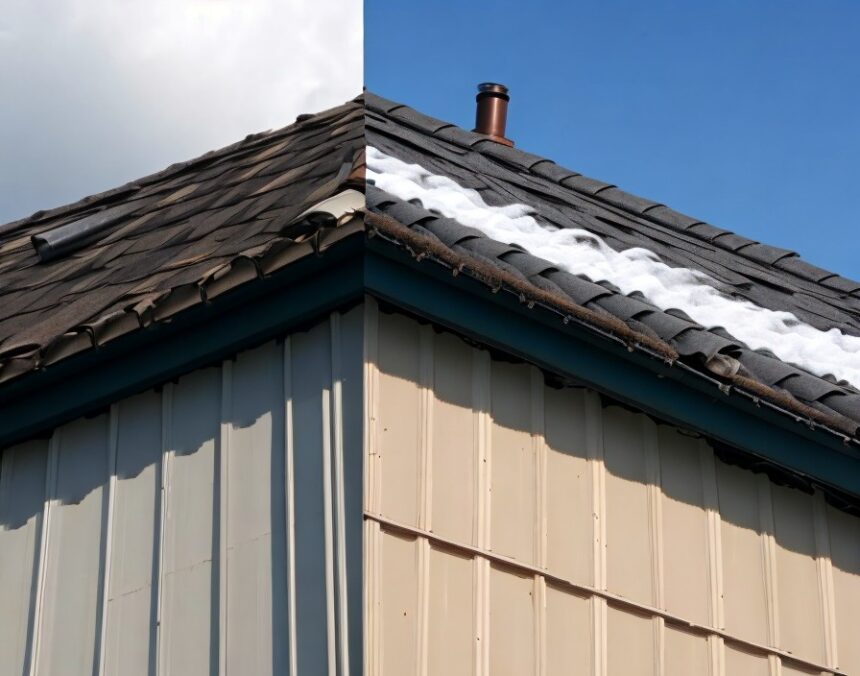
Construction Lift Planning
Construction lift planning is a critical process in the management and execution of construction projects, particularly for those involving the installation, movement, or demolition of heavy materials and equipment. It encompasses a range of activities designed to ensure that lifting operations are carried out safely, efficiently, and effectively, minimizing the risk of accidents and delays.
Key Components of Construction Lift Planning
1. Pre-Planning: This initial step involves gathering all the necessary information about the lift, including the weight and dimensions of the load, the lifting capacity of equipment, and the site conditions where the lifting will take place. This step may also include selecting the right type of crane or lift equipment based on the load’s specifications and the conditions at the construction site.
2. Risk Assessment: Performing a comprehensive risk assessment is essential to identify potential hazards associated with the lifting operation. These hazards could be related to the load, the lifting equipment, the environment, or the personnel involved in the operation. Once identified, measures must be put in place to mitigate these risks.
3. Selection of Equipment: Choosing the right lifting equipment is crucial. This decision should be based on the load’s weight, shape, and size, as well as the lifting distance and the conditions of the lifting site. Equally important is ensuring that the equipment is in good working condition and that it is operated by certified personnel.
4. Lift Path Planning: Detailed planning of the lift path is necessary to ensure that the load can be moved safely from its starting point to its final destination without any obstruction. This involves considering the presence of overhead cables, buildings, and other obstructions that could pose risks during the lifting operation.
5. Communication: Effective communication among all team members involved in the lift is vital. This includes not only the crane operator and rigging personnel but also the site supervisor and any other workers who may be affected by the lifting operation. Clear, concise, and straightforward communication can prevent misunderstandings that could lead to accidents.
6. Supervision and Execution: The lifting operation should be closely supervised by experienced personnel. This ensures that the lift is carried out according to the plan and that any unexpected issues can be addressed promptly.
7. Post-Lift Review: After the completion of the lifting operation, it’s beneficial to conduct a review. This can provide valuable insights into what went well and what could be improved for future lifts. Such reviews contribute to the continuous improvement of lifting operations.
Conclusion
Effective construction lift planning is indispensable for ensuring the safe and efficient execution of heavy lifting operations on construction sites. By meticulously planning each aspect of the lift, from pre-planning and risk assessment to execution and review, construction managers can minimize the risks associated with these operations, protect personnel, and keep projects on schedule.
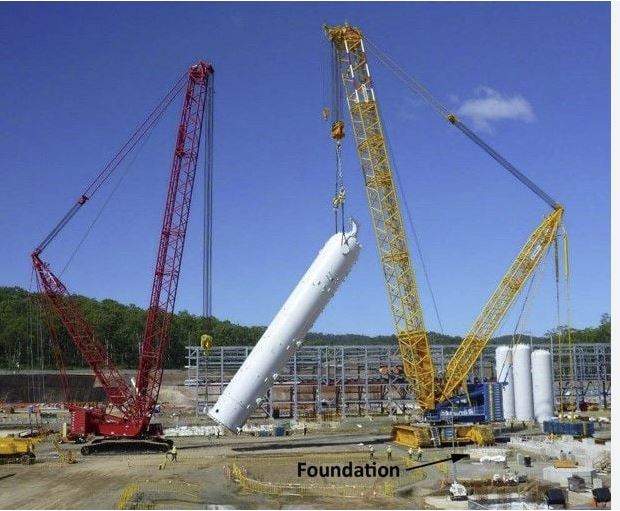
Structural Analysis
Structural analysis is a crucial aspect of civil engineering that involves evaluating and determining the effects of loads and forces on physical structures and their components. This process helps to ensure that a structure can endure the loads it is expected to face throughout its lifespan, including its own weight, the weight of the users, environmental stresses like wind and seismic activities, and other temporary loads without failing or experiencing undue deformation. Structural analysis aids in the design, safety assessment, and optimization of buildings, bridges, towers, and other constructions, enabling engineers to predict the performance of structures under various conditions.
Fundamental Concepts
Loads and Forces: Structural analysis starts with identifying all possible loads that a structure might experience. These include dead loads (permanent or static loads like the weight of the structure itself), live loads (temporary or dynamic loads like vehicles, furniture, and occupants), environmental loads (such as wind, snow, and earthquake forces), and others.
Stress and Strain: Analysis involves calculating the stress (force per unit area) and strain (deformation in the structure) resulting from the applied loads. Understanding how materials within the structure respond to stress and strain is essential for determining whether they can withstand the forces they’ll encounter.
Support Conditions and Restraints: The way a structure is supported or restrained affects how it carries loads. Different types of supports, such as pinned, fixed, or roller supports, offer various degrees of freedom of movement, significantly influencing the structure’s behavior under load.
Types of Structures: Structural analysis can be applied to a wide range of constructions, from simple beams and frames to complex trusses and arches. The structural form impacts the analytical approach and the distribution of forces throughout the structure.
Methods of Structural Analysis:
1. Analytical Methods: These include classical techniques based on mathematics and physics, such as the method of joints and sections for truss analysis, Euler-Bernoulli beam theory, and the method of virtual work. Analytical methods are often used for simpler structures or as the theoretical basis for more complex analyses.
2. Numerical Methods: For more complex structures, numerical methods like the Finite Element Method (FEM) are used. FEM breaks down the structure into smaller, manageable parts (elements) and uses computer software to perform detailed calculations on each part, allowing for a comprehensive analysis of the entire structure.
3. Experimental Methods: In some cases, physical models of structures are tested under controlled conditions to observe their behavior under load. While this approach can be time-consuming and expensive, it provides valuable insights into the performance of novel or unconventional structural designs.
Importance of Structural Analysis in Engineering: Structural analysis is fundamental to ensuring the safety, reliability, and cost-effectiveness of architectural and engineering projects. By precisely understanding how structures behave under various loads, engineers can design safer buildings that efficiently use materials, reducing unnecessary expenses while complying with building codes and standards. Moreover, it enables the identification and mitigation of potential failure points, enhancing the overall resilience of structures against everyday stresses and extreme events. In an era where architectural ambitions continue to grow, coupled with the increasing frequency of extreme weather due to climate change, the role of structural analysis in civil engineering is more critical than ever. It not only supports the creation of innovative and aesthetically pleasing designs but also ensures that these structures can stand the test of time and protect their occupants.
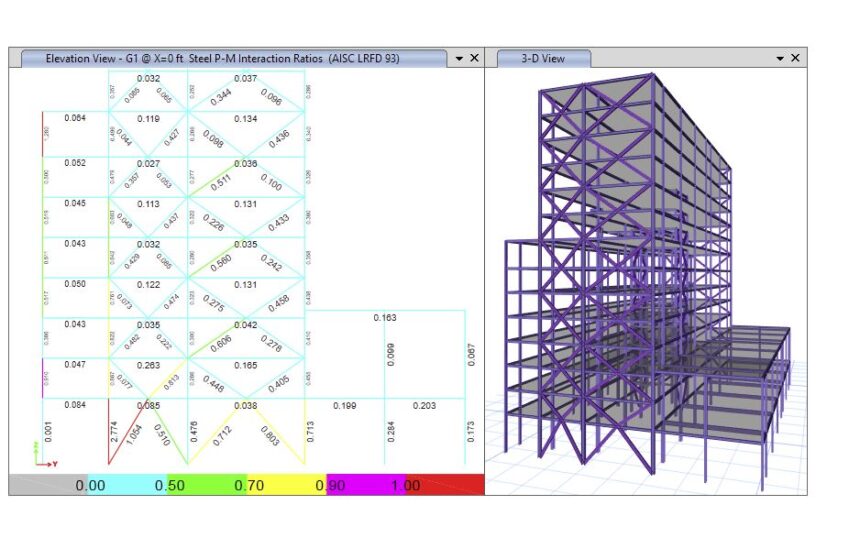
Entertainment and Theatrical Rigging
Entertainment and theatrical rigging refers to the process and practice of setting up and engineering the equipment and systems used to safely support and manipulate scenery, lighting, sound equipment, and even performers in theatrical productions, concerts, and other live entertainment events. This specialized field combines principles of mechanical engineering, physics, and safety to create dynamic and visually stunning environments that enhance storytelling and performances.
Key Components of Entertainment Rigging:
1. Hoists and Lifts: These are used to raise and lower equipment, scenery, and sometimes performers. Hoists can be manually operated or motorized, with motorized hoists being more common in large productions for their precision and ability to handle heavier loads.
2. Trusses and Battens: Trusses are modular metal structures that provide a framework to support lighting, sound equipment, and scenery. Battens are long pipes or bars from which curtains, lights, or scenery are hung. Both trusses and battens are integral to organizing and positioning equipment in the air.
3. Cables and Ropes: These are used in conjunction with hoists, pulleys, and winches to move equipment and scenery. The choice between cable and rope depends on the specific load requirements and the nature of the movement needed.
4. Pulleys and Winches: Pulleys are used to redirect the force applied to a rope or cable, while winches are used to wind and unwind cable or rope, facilitating the lifting and moving of loads.
5. Hardware and Accessories: This includes a variety of clamps, hooks, shackles, and other fittings that are used to securely attach equipment to rigging points, ensuring that loads are safely distributed and stabilized.
Safety Considerations: Safety is paramount in entertainment rigging, as the risk of injury from falling equipment or other rigging failures can be significant. Rigging systems must be meticulously designed, installed, and operated by certified riggers who understand the loads and stresses involved. Regular inspections and maintenance of rigging equipment are essential to prevent failures.
Design and Implementation: The design of a rigging system starts with a detailed understanding of the artistic and technical requirements of the production. This includes knowing the weight of the objects to be rigged, their movements, and the capabilities of the venue. Computer software is often used in the design process to model and simulate the rigging setup, ensuring efficiency and safety.
Technological Advances: Technological advancements have significantly impacted entertainment rigging, making systems more versatile, reliable, and safe. Automated rigging systems, which can be precisely controlled with computer software, allow for complex, synchronized movements of scenery and equipment. This automation enhances the creative possibilities for directors and designers, enabling more dynamic and visually arresting productions.
Educational Pathways: Those interested in a career in entertainment and theatrical rigging often start by gaining hands-on experience through internships or entry-level positions in theater or event production companies. Formal education and training programs, including certifications offered by industry organizations such as the Entertainment Technician Certification Program (ETCP), are valuable for developing the necessary knowledge and skills. In conclusion, entertainment and theatrical rigging is a critical element of live productions, requiring a blend of artistic understanding, technical skill, and stringent safety practices. As productions continue to push creative boundaries, the role of rigging in creating immersive and visually spectacular experiences will remain essential.
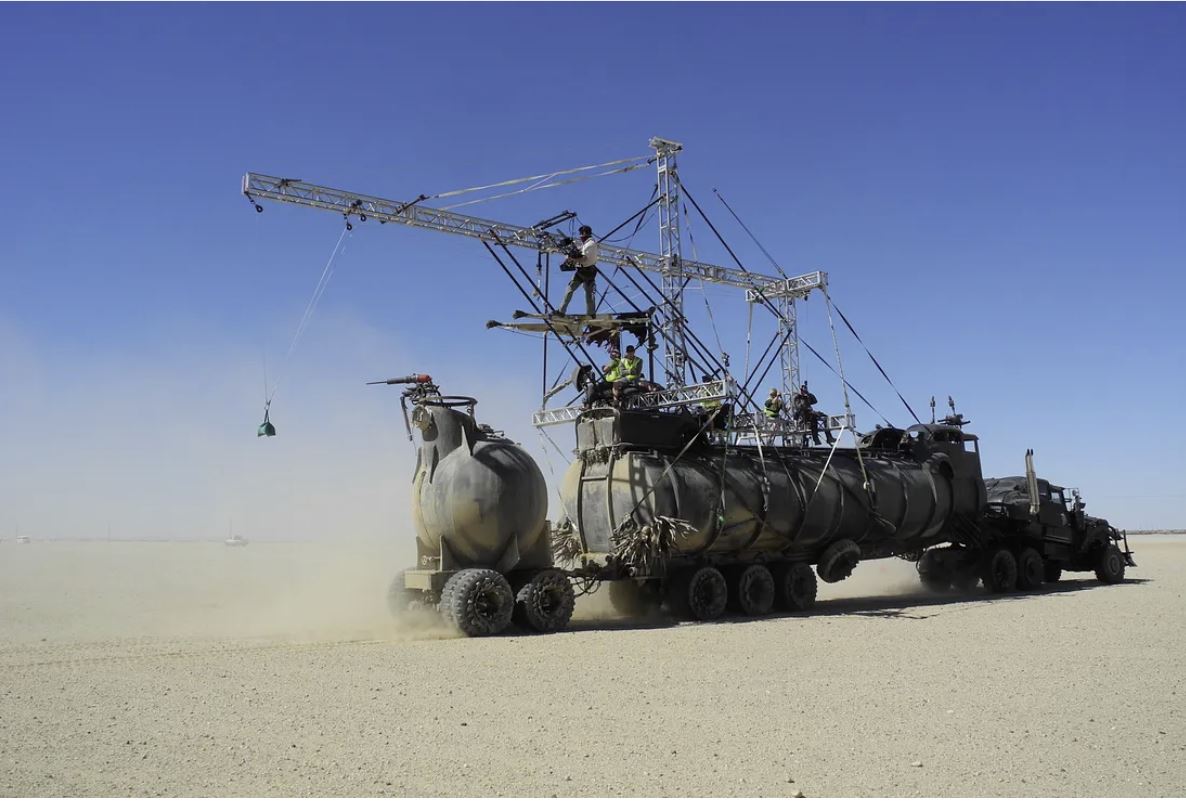
Structural Integrity Assessment
Structural integrity assessment is a comprehensive evaluation conducted to determine the ability of a structure to withstand its intended load without failure during its anticipated lifespan. This process is crucial for ensuring the safety, reliability, and durability of structures, ranging from buildings and bridges to industrial facilities and historical monuments. The assessment encompasses the inspection of physical conditions, analysis of structural behavior, and prediction of future performance under various environmental and operational conditions. Key Aspects of Structural Integrity Assessment are
1. Visual Inspection: The initial step typically involves a thorough visual inspection by experienced engineers or inspectors to identify any visible signs of distress, such as cracks, deformations, corrosion, or any other physical damage. Visual inspection is a non-invasive method that provides immediate insights into the condition of the structure.
2. Non-Destructive Testing (NDT): For a deeper understanding of the structure’s condition, NDT methods are employed. Techniques such as ultrasonic testing, radiography, magnetic particle inspection, and ground-penetrating radar can detect internal flaws or weaknesses without damaging the structure. These methods help in identifying areas that might not be visibly damaged but could potentially cause failure.
3. Material Testing: Samples of structural materials may be collected and tested to determine their properties, such as strength, ductility, and corrosion resistance. This information is crucial for assessing whether the materials still meet the original design specifications and performance requirements.
4. Load Testing: Load testing involves applying controlled loads to the structure or its components to observe how it responds. This can help in identifying the actual bearing capacity of the structure as opposed to theoretical calculations and in pinpointing weak areas.
5. Structural Analysis and Modeling: Advanced computational methods, such as finite element analysis (FEA), are used to create detailed models of the structure. These models simulate the behavior of the structure under various loads and conditions, allowing engineers to analyze its ability to withstand stresses and predict potential failure points.
6. Assessment of Environmental and Operational Factors: Understanding the environment in which the structure operates is critical. Factors such as exposure to corrosive environments, cyclic loading, temperature variations, and natural disasters like earthquakes and floods must be considered as they can significantly impact structural integrity over time.
7. Life Prediction and Remaining Service Life: Based on the findings from the various assessment methods, engineers can predict the remaining service life of the structure. This involves estimating how long the structure can continue to safely fulfill its intended function based on its current condition and the expected future loads and conditions.
Importance of Structural Integrity Assessment:
Structural integrity assessments are crucial for identifying potential safety risks and preventing catastrophic failures that could result in significant economic losses, environmental damage, and loss of life. Regular assessments help in the proactive management of structures, allowing for timely maintenance, repairs, or retrofitting to ensure ongoing safety and compliance with construction codes and standards. They are also essential for extending the lifespan of aging infrastructure, optimizing maintenance budgets, and supporting decision-making regarding the need for replacement or decommissioning. In conclusion, structural integrity assessment plays a vital role in the lifecycle management of structures. By thoroughly evaluating the current state and predicting future performance, engineers can make informed decisions to ensure that structures continue to serve their purpose safely and efficiently, thereby safeguarding public safety and investments in the built environment.

Refinery Turnaround Projects
Refinery turnaround projects are critical, periodic events in the operational schedule of oil refineries. These projects are essentially large-scale maintenance operations where a refinery is partially or completely shut down to perform maintenance, inspection, and testing tasks that cannot be done while the plant is in operation. The primary goal is to ensure the safety, reliability, and efficiency of the refinery’s operations. Turnaround projects are complex and meticulously planned activities that involve a significant amount of preparation and coordination.
They typically occur every few years and can last from a few weeks to several months, depending on the size of the refinery and the scope of work to be done. Due to the extensive nature of these projects, they require a substantial investment of resources, including manpower, equipment, and finances. The planning phase of a refinery turnaround is critical and begins months or even years in advance. It involves detailed scheduling, procurement of necessary materials and equipment, hiring of additional skilled labor, and coordination among various departments within the refinery.
Safety is a paramount concern, so rigorous safety protocols and procedures are developed and followed throughout the turnaround process. During a turnaround, a wide range of activities takes place, including cleaning, inspection, maintenance, and replacement of machinery and equipment. This might involve work on pipes, boilers, furnaces, and other critical components. Inspections are thorough, often involving advanced techniques such as ultrasonic testing, radiography, and thermography to detect wear, corrosion, or other potential failures.
The successful execution of a turnaround project not only ensures the operational integrity and safety of the refinery but also helps to improve its efficiency and capacity. It allows for the implementation of new technologies and upgrades that can enhance the refinery’s performance and environmental compliance. Moreover, turnarounds are an opportunity to address any regulatory inspections and certifications required for continued operation. In conclusion, refinery turnaround projects are essential for maintaining the operational viability and safety of oil refineries. They require significant planning, resources, and coordination to execute successfully but are crucial for the long-term success and sustainability of refining operations.
